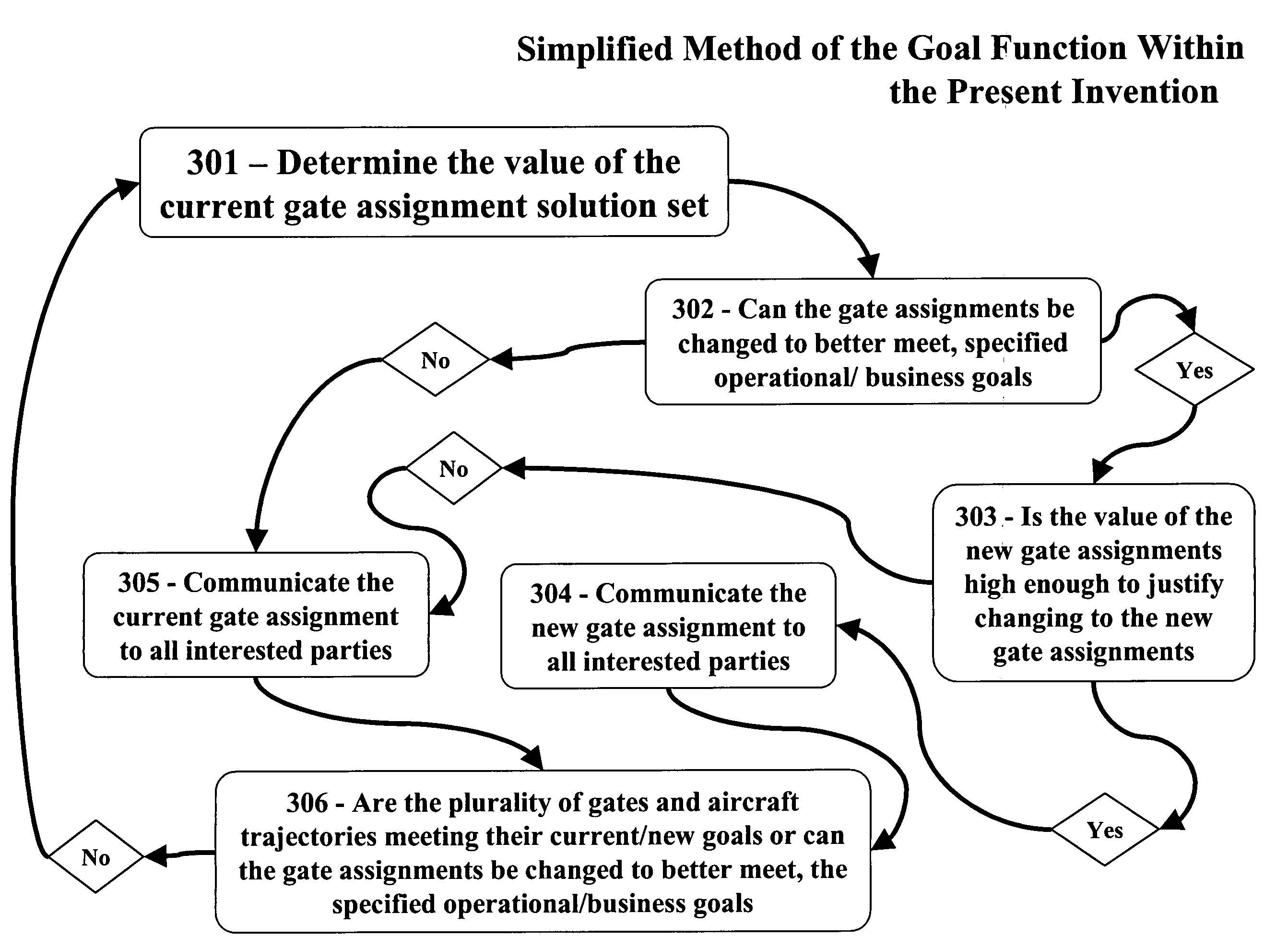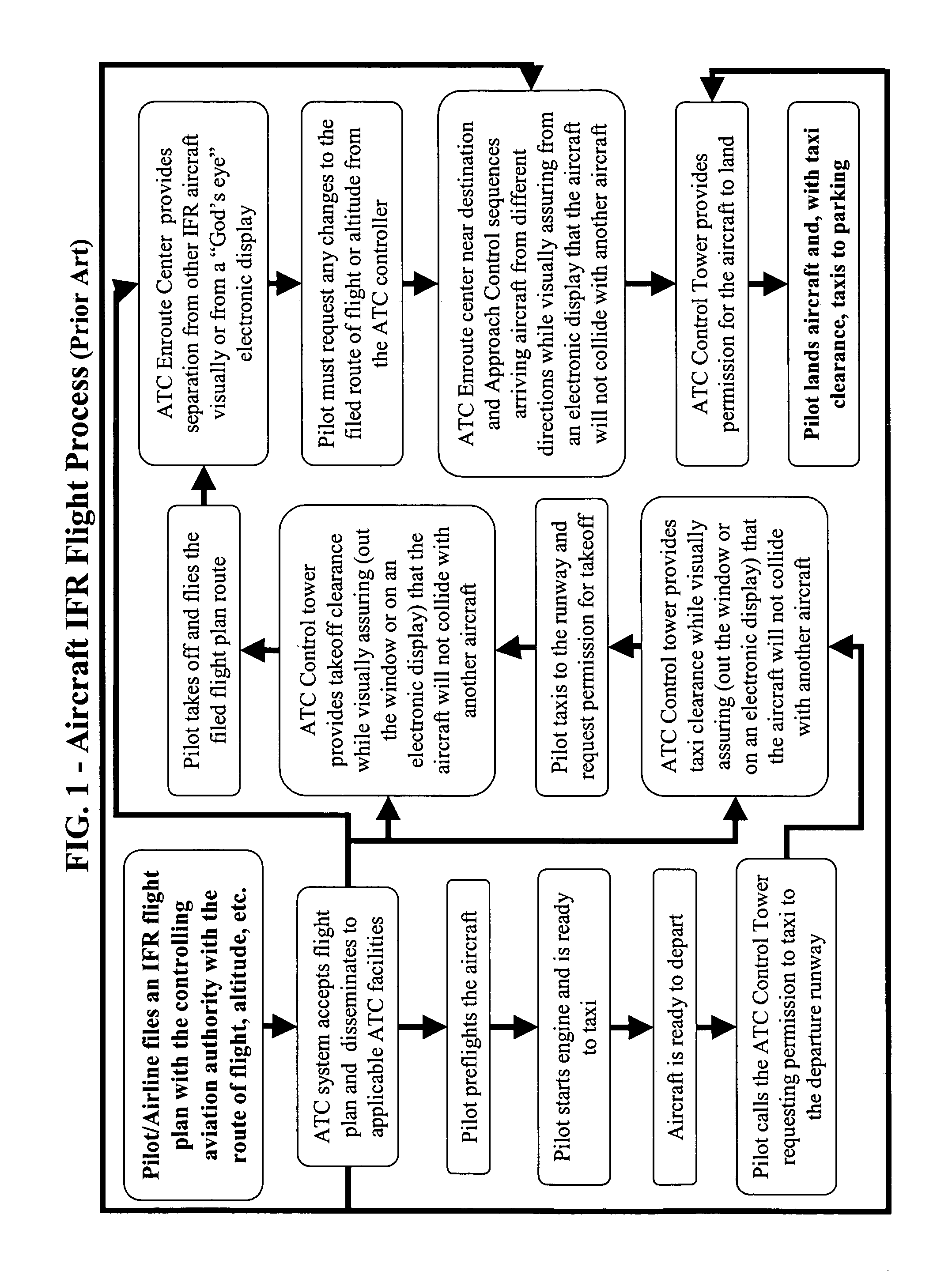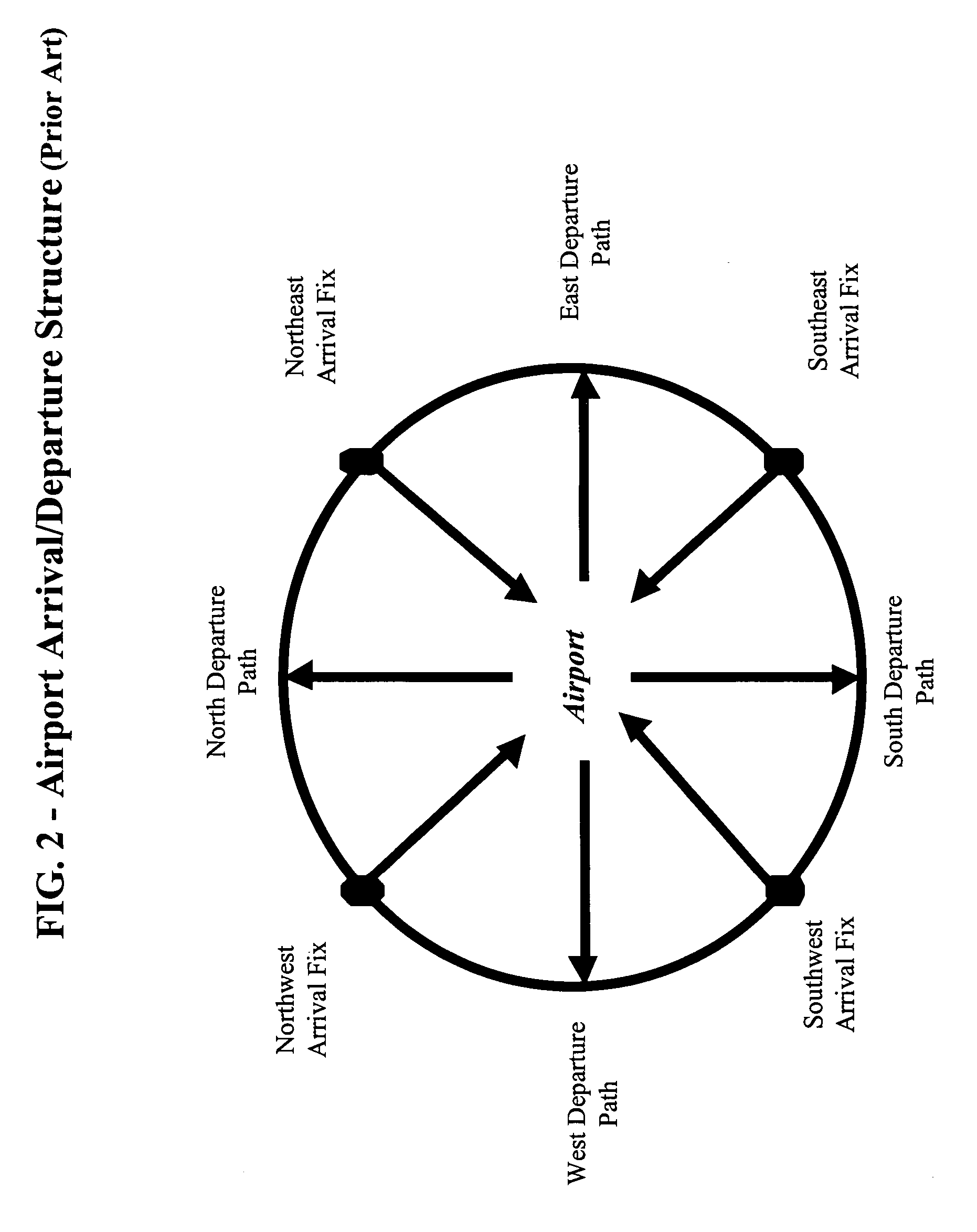Method and system for tactical gate management by aviation entities
a technology for aviation entities and gate management, applied in process and machine control, instruments, navigation instruments, etc., can solve the problems of many complex methods and optimization systems, unresolved overall optimization of key aspects, and few successful attempts by various parties, so as to minimize the use and throughput, and mitigate limitations and problems.
- Summary
- Abstract
- Description
- Claims
- Application Information
AI Technical Summary
Problems solved by technology
Method used
Image
Examples
Embodiment Construction
[0076]Referring now to the drawings wherein are shown preferred embodiments and wherein like reference numerals designate like elements throughout, there is shown in the drawings to follow the decision steps involved in a method of the present invention. This method effectively manages the gate assignments for a plurality of aircraft arrivals into an airport.
[0077]As discussed above, the overall goal of the present invention is to increase gate, aircraft and other asset efficiency through the real time management of the gate / ramp parking asset from a system perspective. It is important to note that the present invention is a unique, novel combination of several process steps. The various processes involved in these steps include:[0078]1. A data collection process that collects all of the specified data necessary for the specified airport, and the selected set of assets, aircraft and gates applicable to this specified airport.[0079]2. An asset trajectory tracking (i.e., three spatial...
PUM
 Login to View More
Login to View More Abstract
Description
Claims
Application Information
 Login to View More
Login to View More - R&D
- Intellectual Property
- Life Sciences
- Materials
- Tech Scout
- Unparalleled Data Quality
- Higher Quality Content
- 60% Fewer Hallucinations
Browse by: Latest US Patents, China's latest patents, Technical Efficacy Thesaurus, Application Domain, Technology Topic, Popular Technical Reports.
© 2025 PatSnap. All rights reserved.Legal|Privacy policy|Modern Slavery Act Transparency Statement|Sitemap|About US| Contact US: help@patsnap.com



